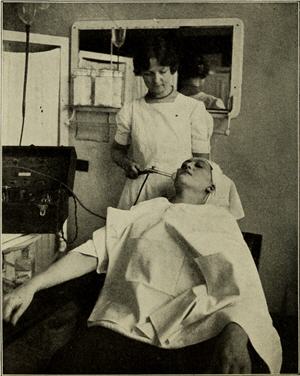Adult Acne Causes and Treatments
Adult Acne Causes – Propionibacterium, Hormones vs. Free Radicals
Propionibacterium is a naturally occurring bacterium living inside your follicles and pores, below the surface of the skin. Normally this bacterium does no harm to your skin because it feeds on the sebum secreted by your sebaceous glands along with any cellular debris and wastes products from skin cell production (1).
Hormones and Free Radicals can Trigger Adult Acne
Hormonal fluctuations brought on by stress, poor diet, PMS, or pregnancy can cause an increase in cortisol. Cortisol then breaks down into testosterone causing excess oil production – sebum – in your skin and pores. This excess oil production can increase the growth of propionibacterium, and this in turn can contribute to the pores getting clogged up with dead skin cells, dirt and oil. This gunky pileup then causes inflammation of the hair follicles and sebaceous glands – in other words: adult acne.
And it doesn’t take much stress to bring on adult acne. “Even a moderate amount of daily stress—like balancing a career and a social life, or coming home from work and having to cook dinner for your family—is enough to trigger a breakout,” says Ava Shamban, M.D., assistant clinical professor of dermatology at UCLA and author of “Heal Your Skin” (2). Smoking can also trigger adult acne, at least in women (3).
A recent theory proposes that inflammation of the hair follicles and sebaceous glands can be caused by oxidative stress (4). Oxidative stress is counteracted by antioxidants. A decrease in antioxidant vitamins such as A, C and E in adults has been correlated with acne.
Adult Acne Treatment

Adult Acne Treatment – We’ve Come a Long Way Baby
Salicylic Acid Cleaners & Anti-Microbial Agent
Whether adult acne is caused by hormonal fluctuations and/or oxidative stress, the best way to clean the skin and unplug pores is to use over-the-counter salicylic acid cleaners, like our AHA Oily & Acne Solution (4 oz), followed by a product containing benzoyl peroxide to fight bacterial growth in the skin (or an oil free moisturizer with anti-microbial agent, like our Oil Free Moisturizer (1 oz) and a skin cover, like our Vitamin C Power Gel (1 oz), to combat both inflammation and oxidative stress.
Topical Retinoids
Topical retinoids, which come in liquids, creams or gels, like our Hyaluronic Acid Gel (1 oz), help remove plugged follicles by inducing the skin to create new skin cells. Creating new skin cells in this way increases the skin’s sensitivity to sunlight, so you’ll want to apply a good sunscreen before you head outdoors, like our Super Sheer Sunscreen SPF 50+ (2.5 oz).
If you have severe, potentially disfiguring, adult acne, you may need to try prescription oral retinoids, but these oral retinoids do have some potentially serious side effects, like depression and inflammatory bowel disease.
Antibiotics
Because bacterium is the root cause of adult acne, especially in serious cases, a doctor may prescribe antibiotics in the form of either a cream, gel or lotion. Such antibiotics include erythromycin (Brand name: Benzamycin), clindamycin (Brand name: Duac), and sulfacetamide (Brand name: Plexion).
Birth control pills
For women, birth control pills have traditionally provided great defense against acne. Common birth control pills include Ortho Tri-Cyclen and Yasmin.
Skip The Laser And Light Therapies For Now.
Laser light therapies may one day play a role in treating adult acne, but so far, there is little good research to support their use.
Finally, if you have acne and your diet is poor, shift to a high antioxidant diet to combat both inflammation and oxidative stress
References
- Evgenia M., Ruta G., and Christos C.Z. “An update on the role of the sebaceous gland in the pathogenesis of acne“. Dermatoendocrinol. 2011 Jan-Mar; 3(1): 41–49.
- Ava S. “Heal Your Skin: The Breakthrough Plan for Renewal.” Wiley, 1st ed., May 1, 2011.
- Bruno C., Jo Linda S., Valentina B., Paola C.F., Mauro P., and Christos C. Z. “Underestimated clinical features of postadolescent acne.” Journal of the American Academy of Dermatology, 63(5), 782-788.
- Bowe W.P., Patel N., and Logan A.C. “Acne vulgaris: the role of oxidative stress and the potential therapeutic value of local and systemic antioxidants.” J Drugs Dermatol. 2012 Jun; 11(6):742-6.
